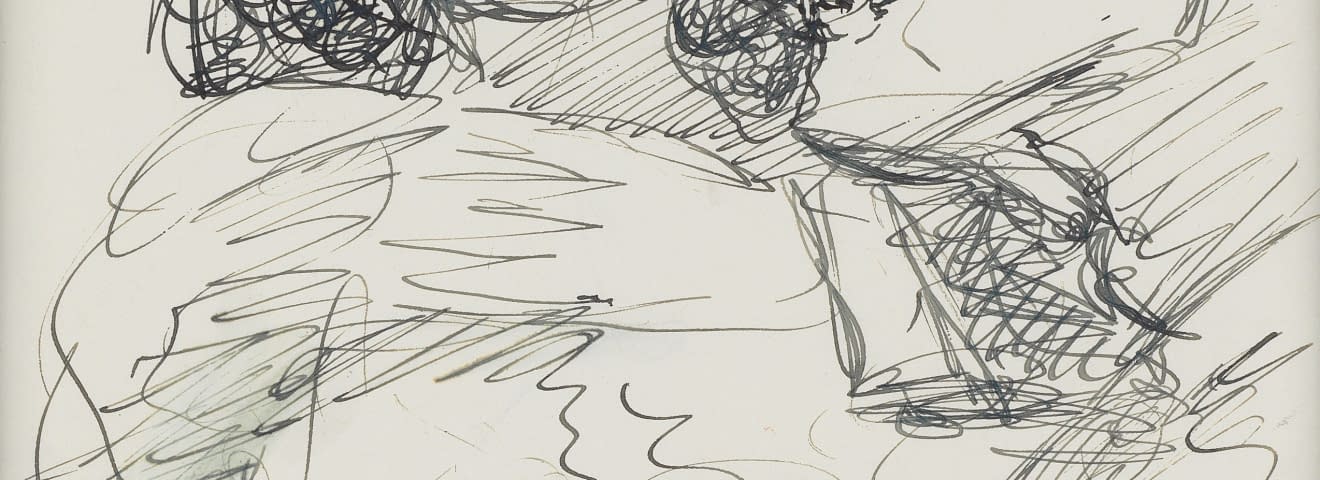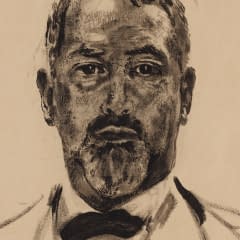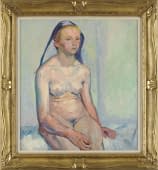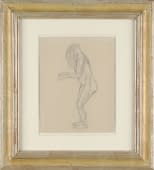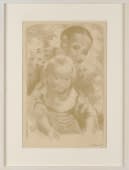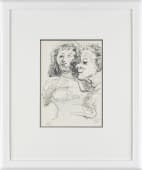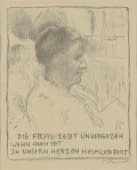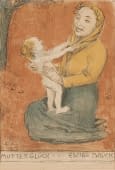Cuno Amiet
geboren 28. März 1868 in Solothurn
gestorben 6. Juli 1961 in Oschwand
Kunststil
Über
Cuno Amiet gab als erster Schweizer Künstler der Farbe den Vorrang in der Komposition und gilt als Wegbereiter der modernen Malerei in der Schweiz. Als Fünfzehnjähriger malte Amiet das erste Selbstporträt, bevor er 1884 Schüler von Frank Buchser wurde. 1886 – 1888 besuchte Amiet die Akademie der Bildenden Künste in München und anschliessend die Académie Julian in Paris. 1892 ging er für ein Jahr nach Pont-Aven, wo er Paul Gauguin und Vincent van Gogh entdeckte und die Grundlagen für seinen Kolorismus legte.
Bei seiner Rückkehr in die Schweiz stiess seine Verwendung von reinen Farben auf Ablehnung. Unter dem Einfluss Ferdinand Hodlers, zu dem er bis 1905 eine enge Freundschaft pflegte, setzte er sich mit dem Jugendstil auseinander. Dann wurde die Künstlergruppe "Die Brücke" auf Amiet aufmerksam und gewann ihn als Mitglied (1906 – 1913). Er experimentierte erneut mit einem reinen Kolorismus und es entstand ein eigenständiges, reichhaltiges Werk, in dem vier Themen besonders hervortraten: Der Garten, die Obsternte, die Winterlandschaft und das Selbstporträt. Der Ort Oschwand, wo er sich 1898 niederliess, wurde ab 1908 zu einem Zentrum künstlerischen Schaffens und einem Treffpunkt für Kunstinteressierte.
Cuno Amiet was the first Swiss artist to prioritize colour in composition and preceded the Modern art movement in Switzerland. After completing his first self-portrait at the age of 15, Amiet became Frank Buchser’s student in 1884. During the autumn of 1886, Amiet went to Munich and studied at the Academy of Fine Arts. In 1887 he met Giovanni Giacometti, who later became his lifelong friend, and the following year they travelled to Paris together where Amiet began further studies at the Académie Julian. However, following the year 1892 Amiet became increasingly dissatisfied with his academy classes and transferred to Pont-Aven where he discovered Paul Gauguin and Vincent van Gogh and laid the foundations for his colourist painting.
In 1894, Amiet held an exhibition in the Kunsthalle Basel, where his use of overly saturated colours was largely rejected by art critics. Later, in 1898, he was commissioned to create a portrait of Ferdinand Hodler, the subsequent connection between the two artists led to Amiet’s increased interest in Art Nouveau.
In 1905, Amiet held an exhibition at the Galerie Richter in Dresden, where the artists’ group "Die Brücke" became aware of him. In 1906, Erich Heckel invited Amiet to become a member of the group giving him the opportunity to be part of the first Brücke exhibition, focused on the female nude, in Dresden.
In 1914, Amiet held a solo exhibition at the Kunsthaus Zurich with 124 works on display. In 1919, he was awarded an honorary doctorate from the University of Bern. Today Cuno Amiet is regarded as one of the most important pioneers of classical modernism in Switzerland.
Ausstellungen (Auswahl)
2018 Cuno Amiet. Retrospektive zum 150. Geburtstag. Meisterwerke aus acht Jahrzehnten, Bromer Kunst, Roggwil.
2011/2012: Ferdinand Hodler und Cuno Amiet. Eine Künstlerfreundschaft zwischen Jugendstil und Moderne, Kunstmuseum Solothurn; Bucerius Kunst Forum, Hamburg.
2011/2012: Amiet. «Freude meines Lebens». Sammlung Eduard Gerber. Kunstmuseum Bern.
1959: From Hodler to Klee: Swiss Art of the Twentieth Century. Tate Gallery, London.
Bei seiner Rückkehr in die Schweiz stiess seine Verwendung von reinen Farben auf Ablehnung. Unter dem Einfluss Ferdinand Hodlers, zu dem er bis 1905 eine enge Freundschaft pflegte, setzte er sich mit dem Jugendstil auseinander. Dann wurde die Künstlergruppe "Die Brücke" auf Amiet aufmerksam und gewann ihn als Mitglied (1906 – 1913). Er experimentierte erneut mit einem reinen Kolorismus und es entstand ein eigenständiges, reichhaltiges Werk, in dem vier Themen besonders hervortraten: Der Garten, die Obsternte, die Winterlandschaft und das Selbstporträt. Der Ort Oschwand, wo er sich 1898 niederliess, wurde ab 1908 zu einem Zentrum künstlerischen Schaffens und einem Treffpunkt für Kunstinteressierte.
Cuno Amiet was the first Swiss artist to prioritize colour in composition and preceded the Modern art movement in Switzerland. After completing his first self-portrait at the age of 15, Amiet became Frank Buchser’s student in 1884. During the autumn of 1886, Amiet went to Munich and studied at the Academy of Fine Arts. In 1887 he met Giovanni Giacometti, who later became his lifelong friend, and the following year they travelled to Paris together where Amiet began further studies at the Académie Julian. However, following the year 1892 Amiet became increasingly dissatisfied with his academy classes and transferred to Pont-Aven where he discovered Paul Gauguin and Vincent van Gogh and laid the foundations for his colourist painting.
In 1894, Amiet held an exhibition in the Kunsthalle Basel, where his use of overly saturated colours was largely rejected by art critics. Later, in 1898, he was commissioned to create a portrait of Ferdinand Hodler, the subsequent connection between the two artists led to Amiet’s increased interest in Art Nouveau.
In 1905, Amiet held an exhibition at the Galerie Richter in Dresden, where the artists’ group "Die Brücke" became aware of him. In 1906, Erich Heckel invited Amiet to become a member of the group giving him the opportunity to be part of the first Brücke exhibition, focused on the female nude, in Dresden.
In 1914, Amiet held a solo exhibition at the Kunsthaus Zurich with 124 works on display. In 1919, he was awarded an honorary doctorate from the University of Bern. Today Cuno Amiet is regarded as one of the most important pioneers of classical modernism in Switzerland.
Ausstellungen (Auswahl)
2018 Cuno Amiet. Retrospektive zum 150. Geburtstag. Meisterwerke aus acht Jahrzehnten, Bromer Kunst, Roggwil.
2011/2012: Ferdinand Hodler und Cuno Amiet. Eine Künstlerfreundschaft zwischen Jugendstil und Moderne, Kunstmuseum Solothurn; Bucerius Kunst Forum, Hamburg.
2011/2012: Amiet. «Freude meines Lebens». Sammlung Eduard Gerber. Kunstmuseum Bern.
1959: From Hodler to Klee: Swiss Art of the Twentieth Century. Tate Gallery, London.
